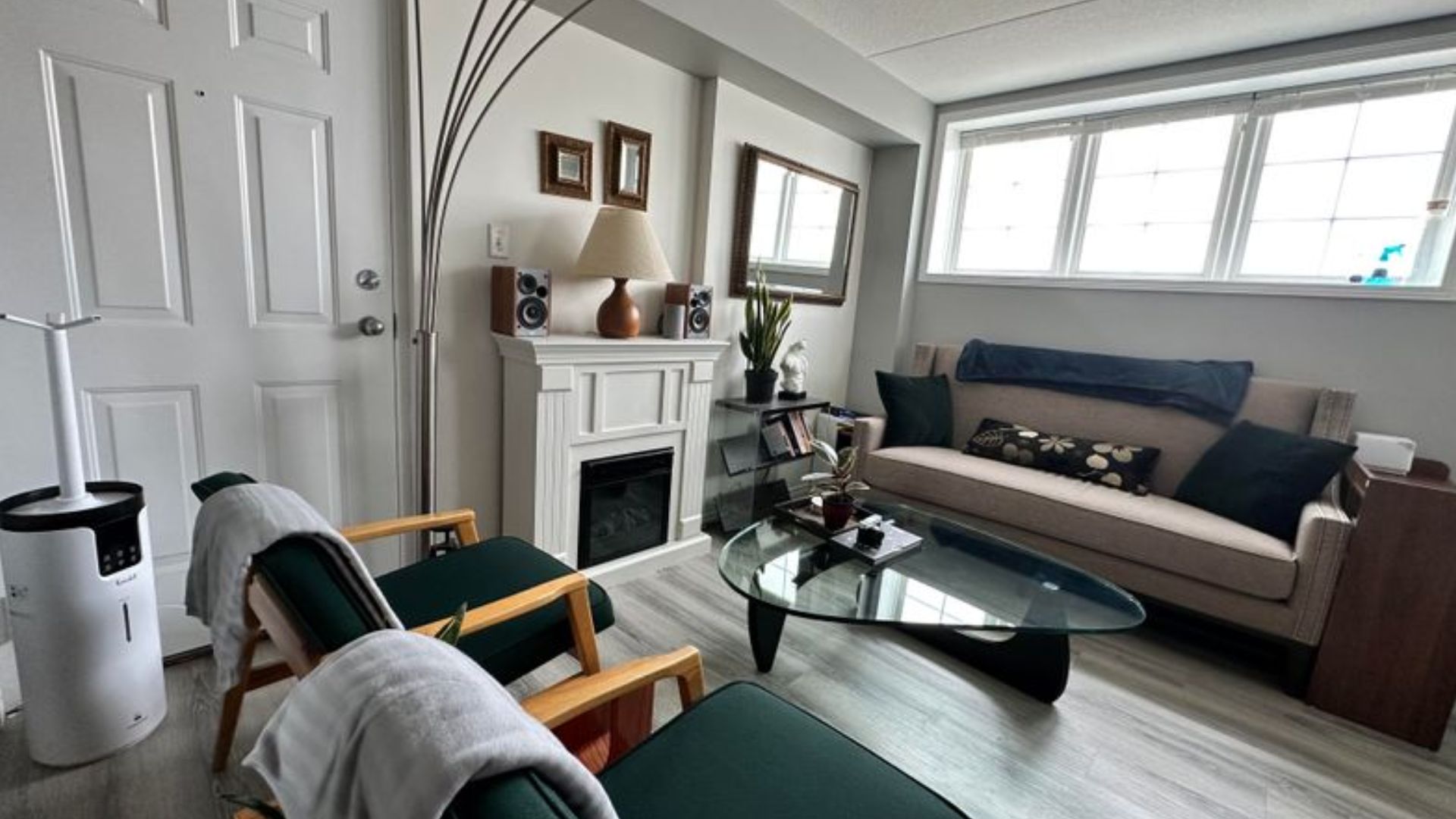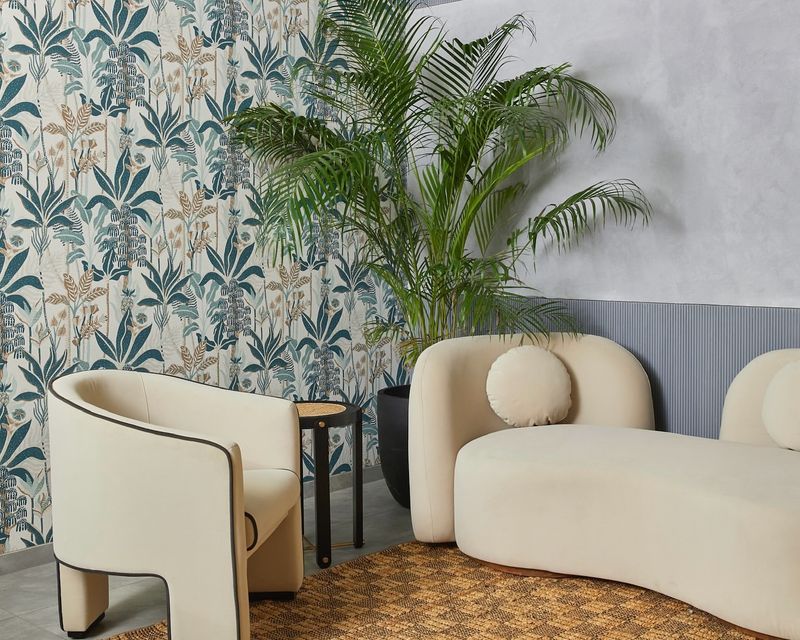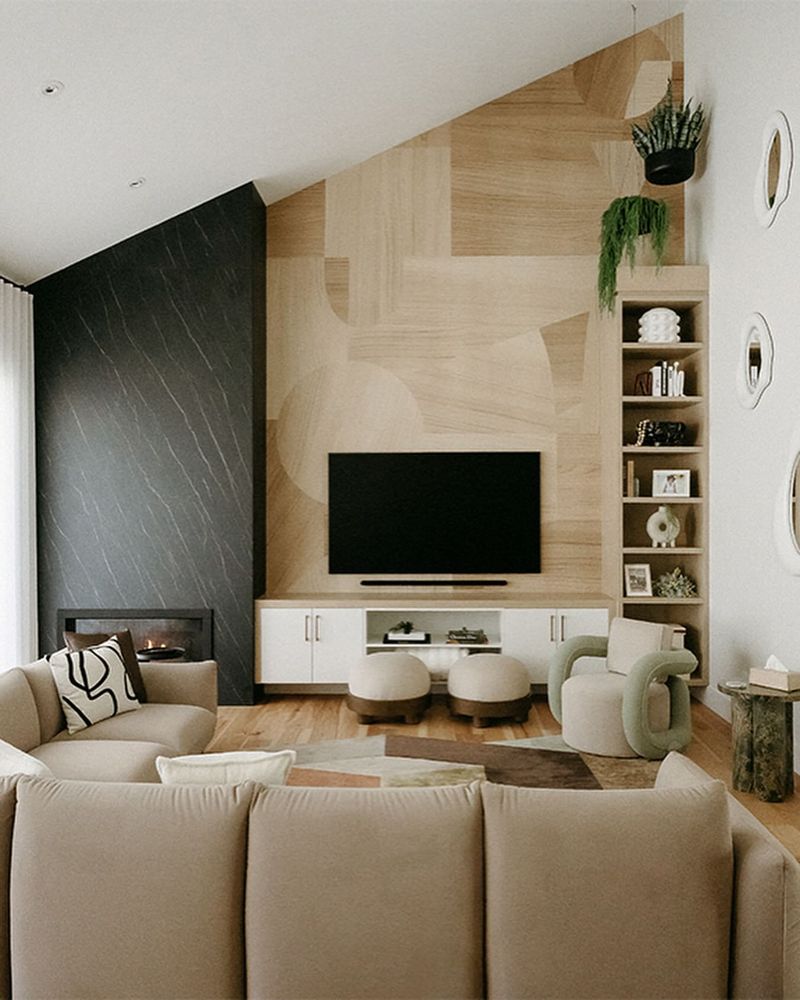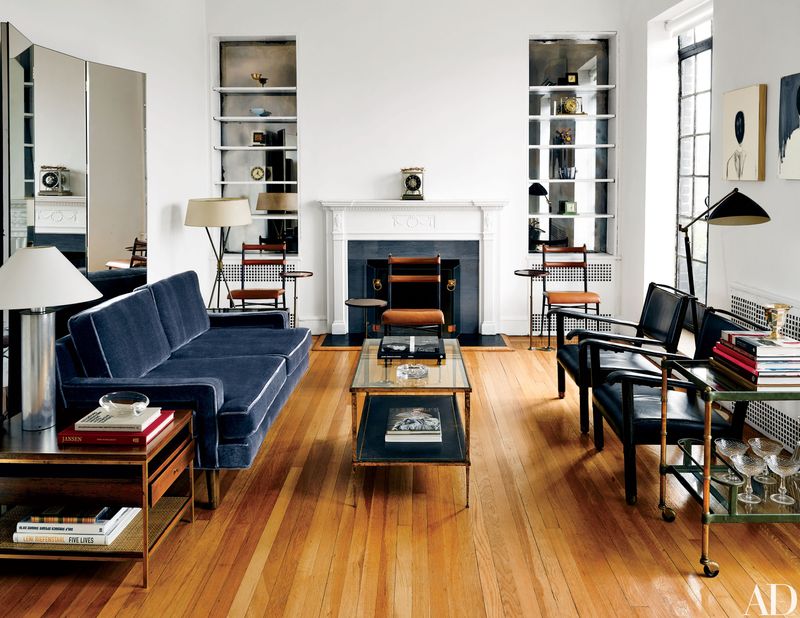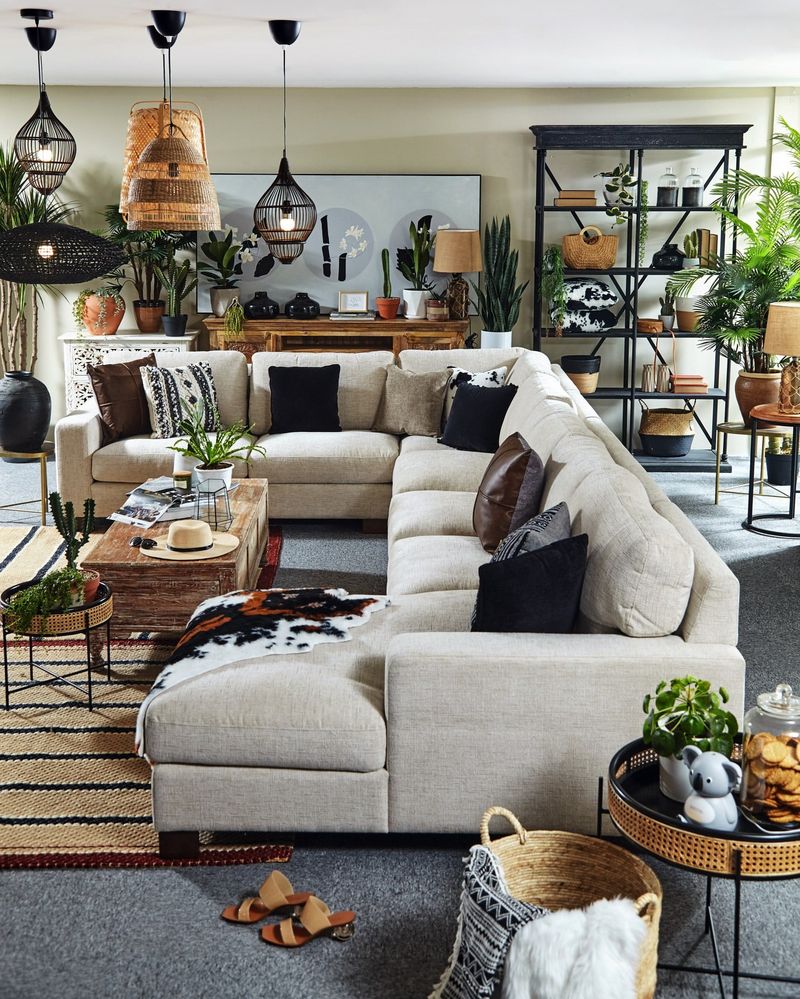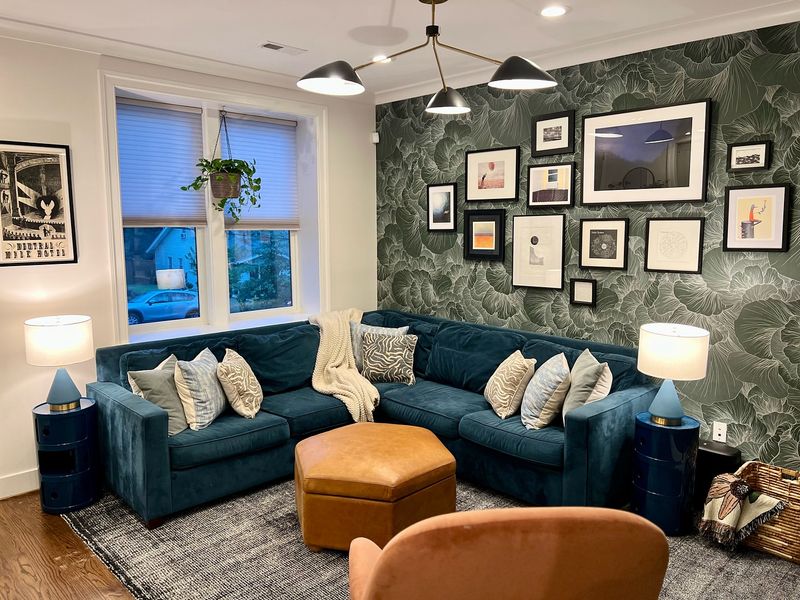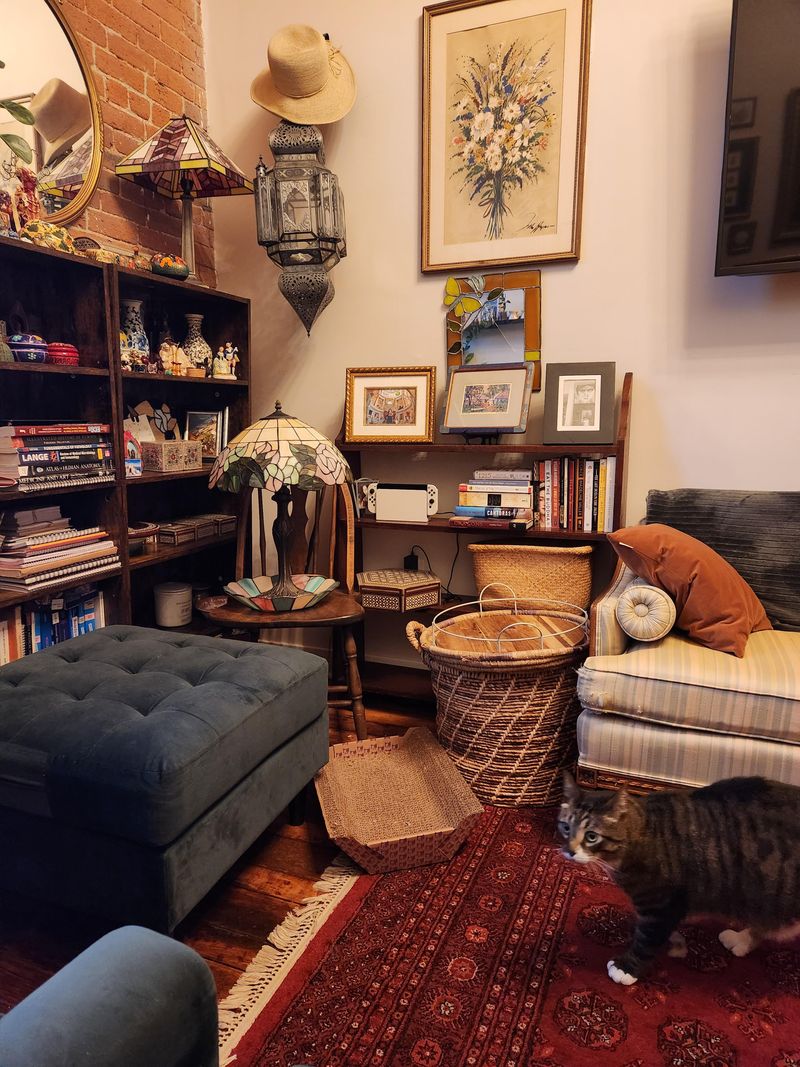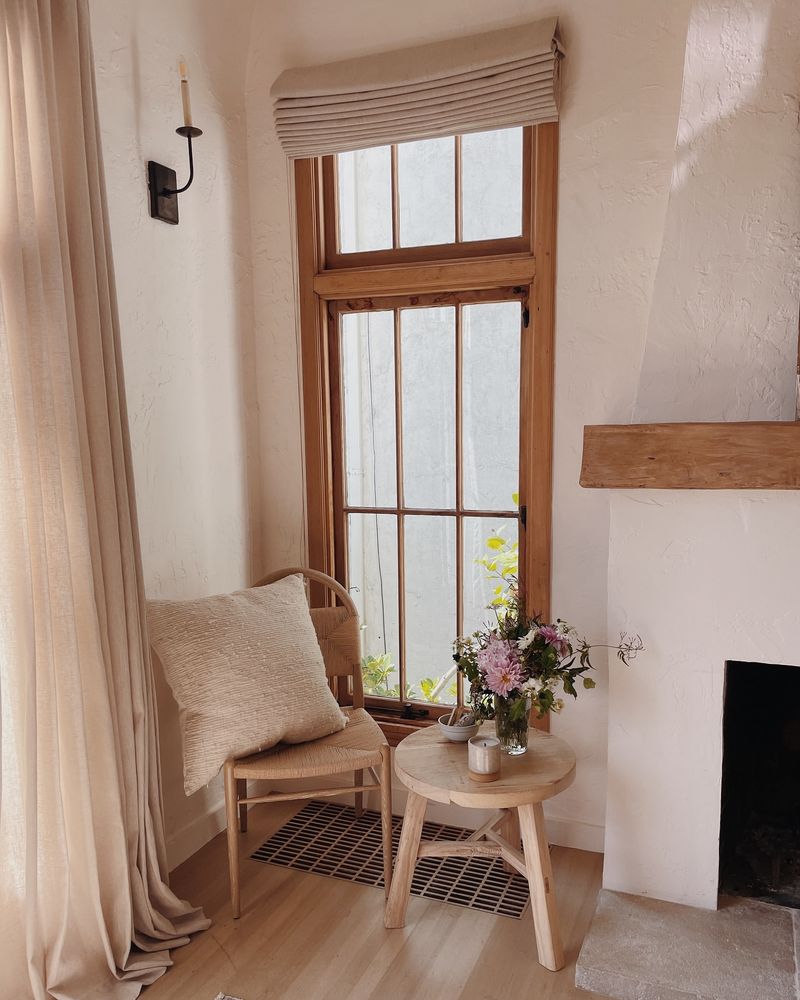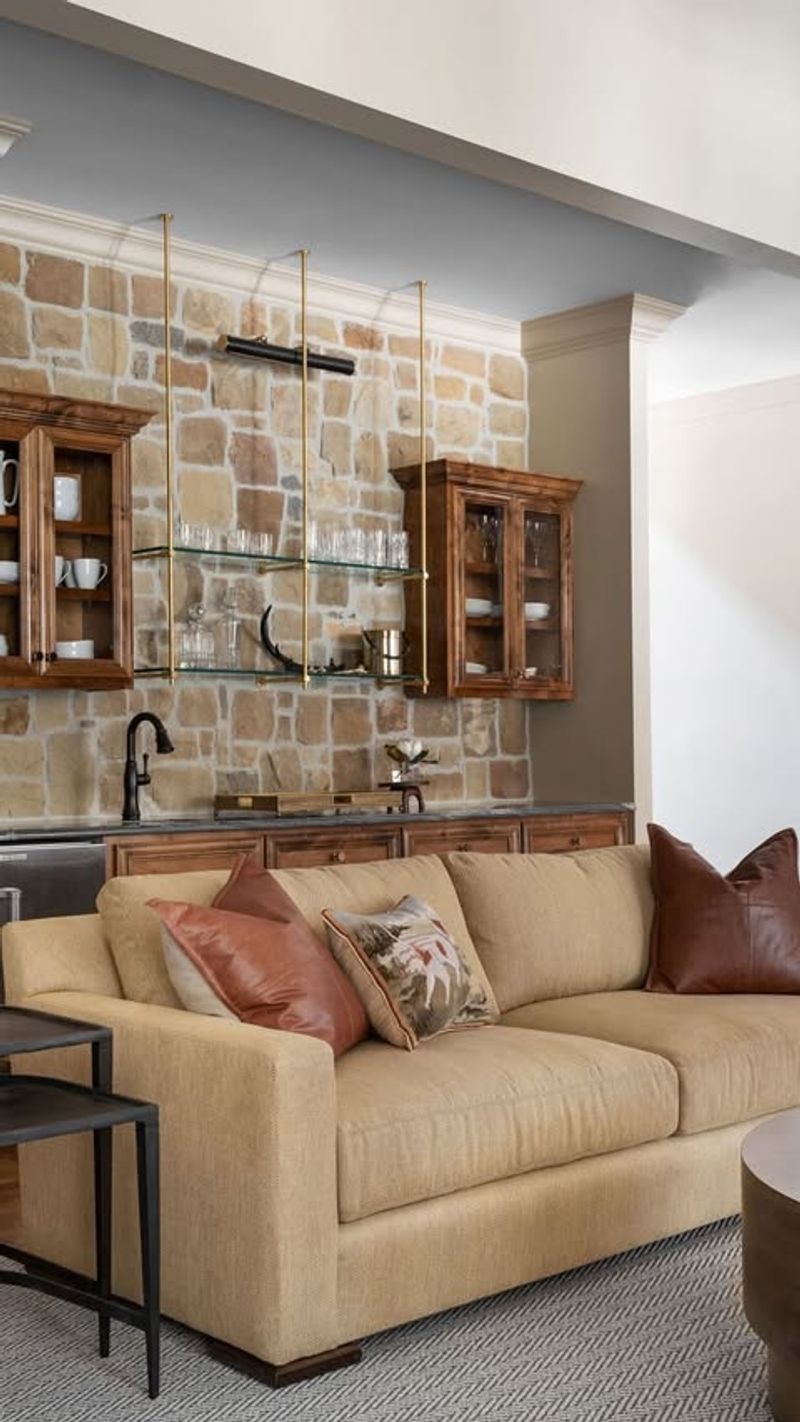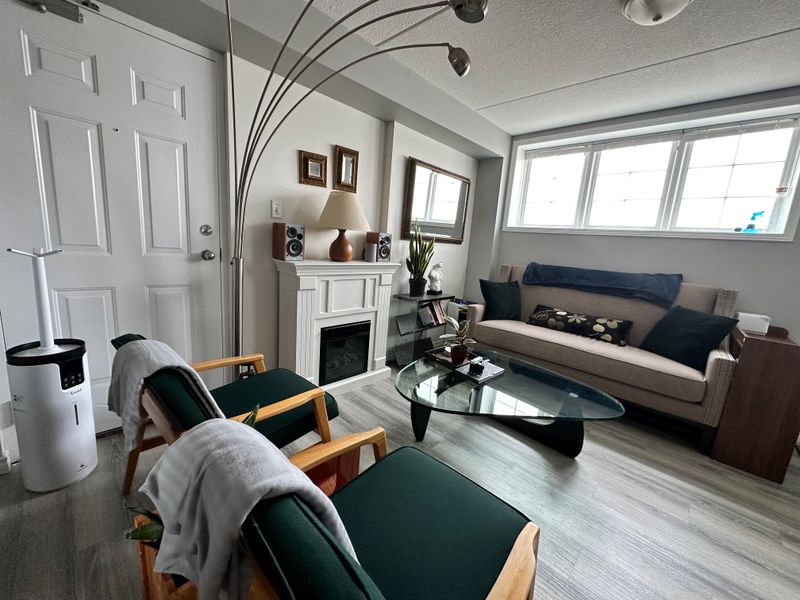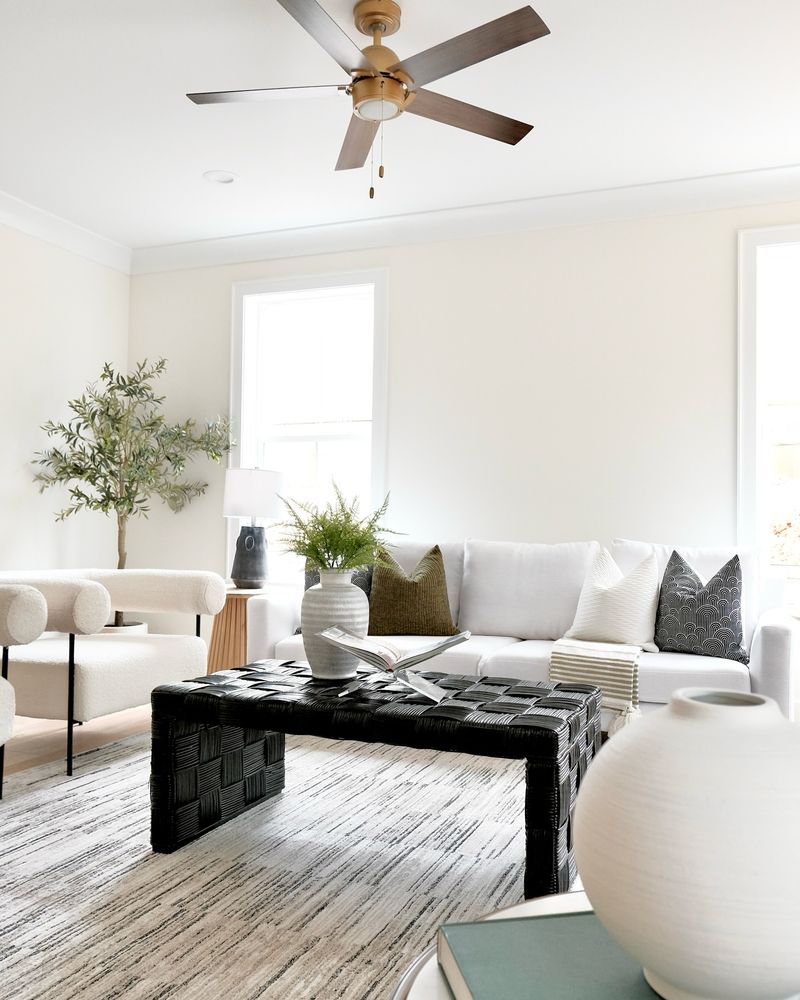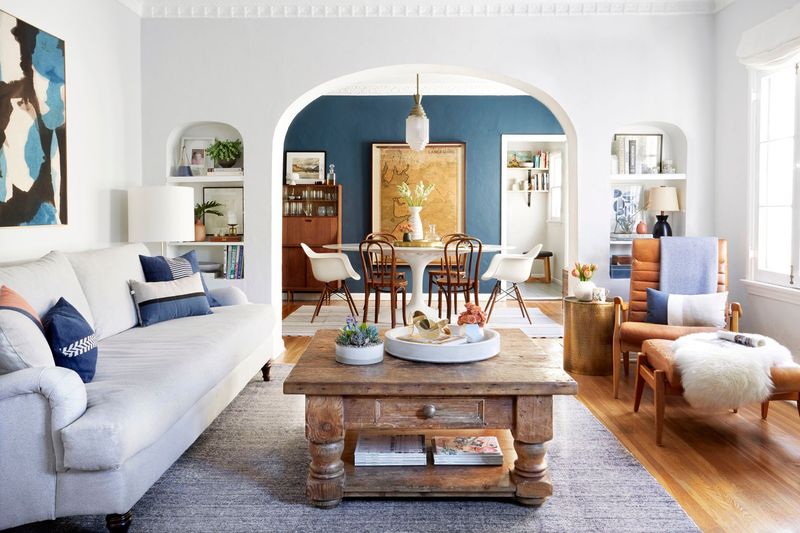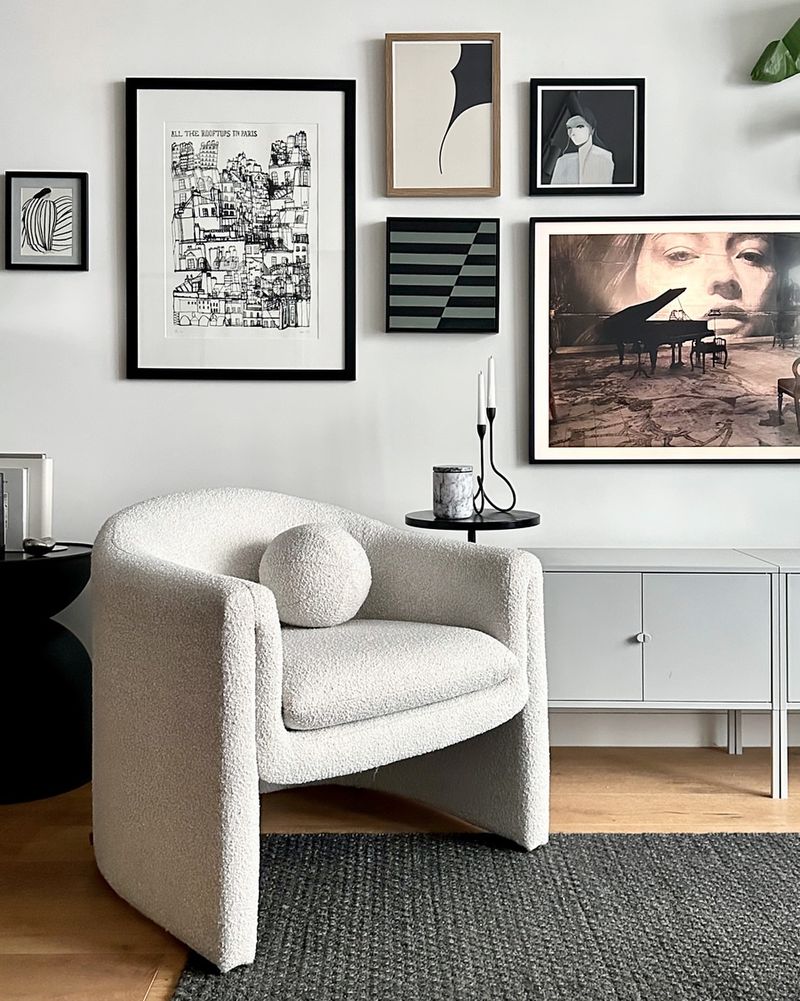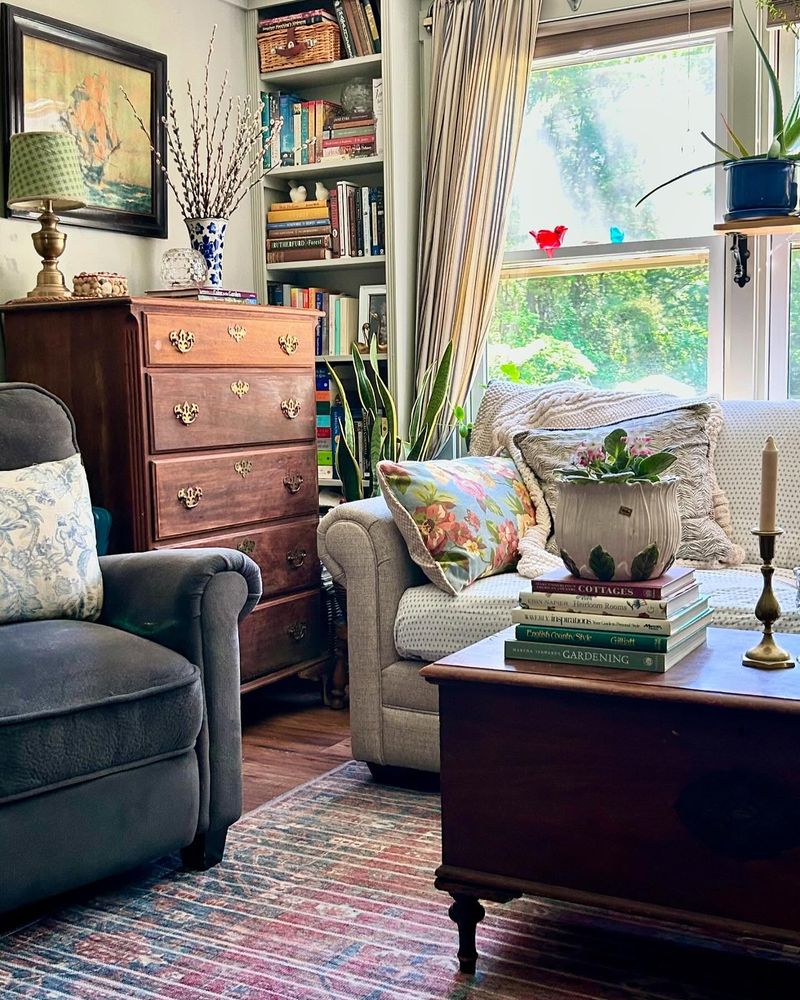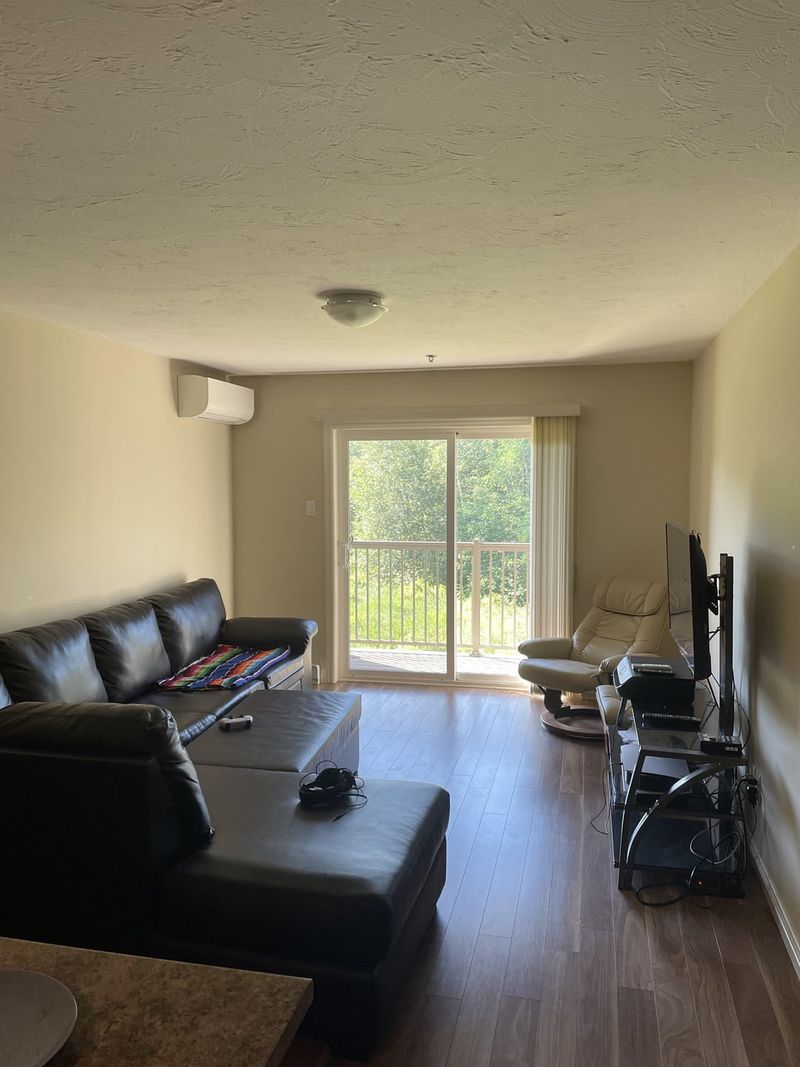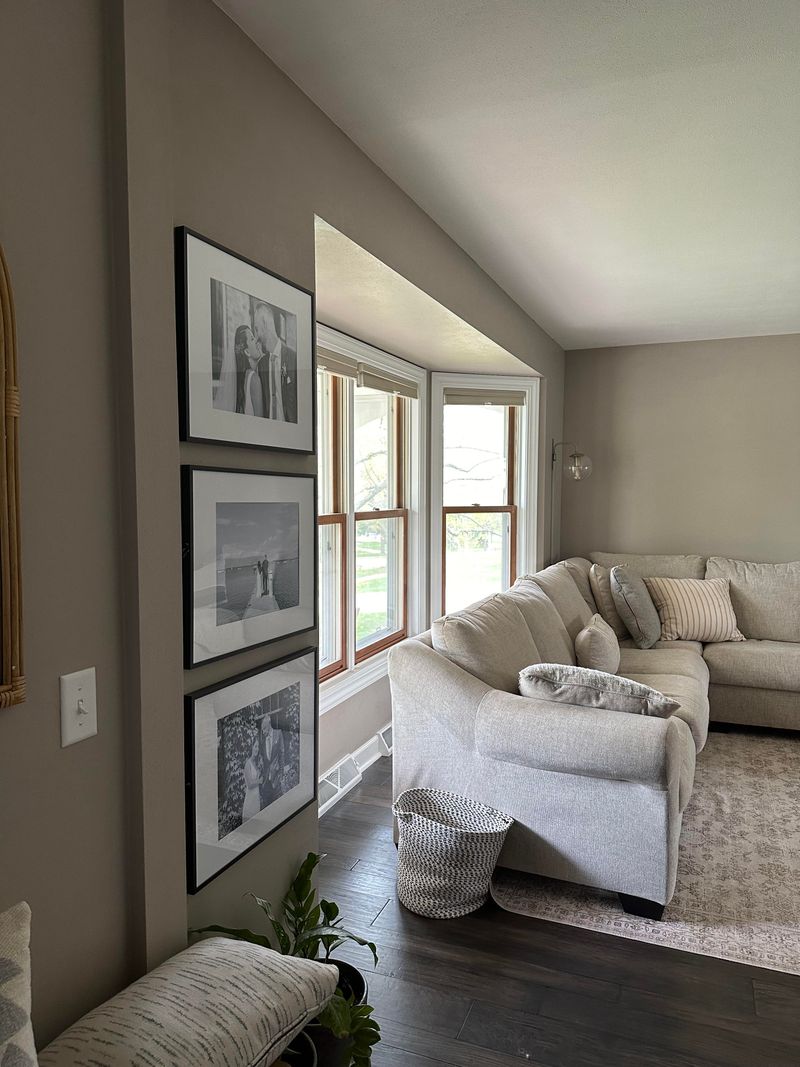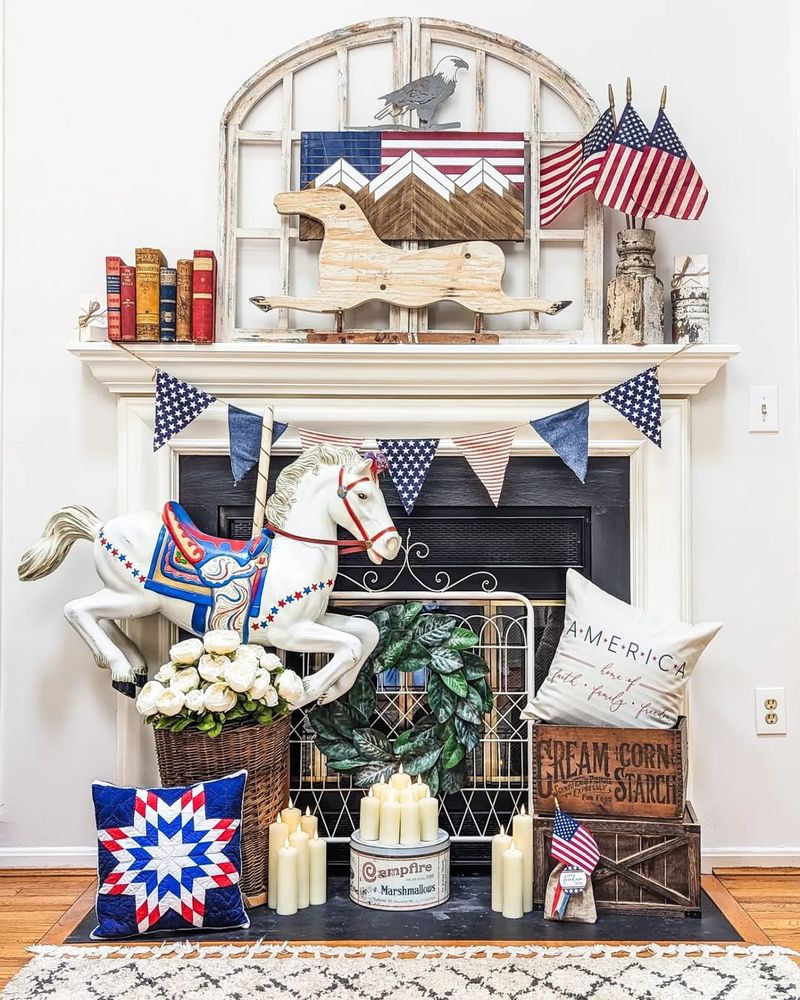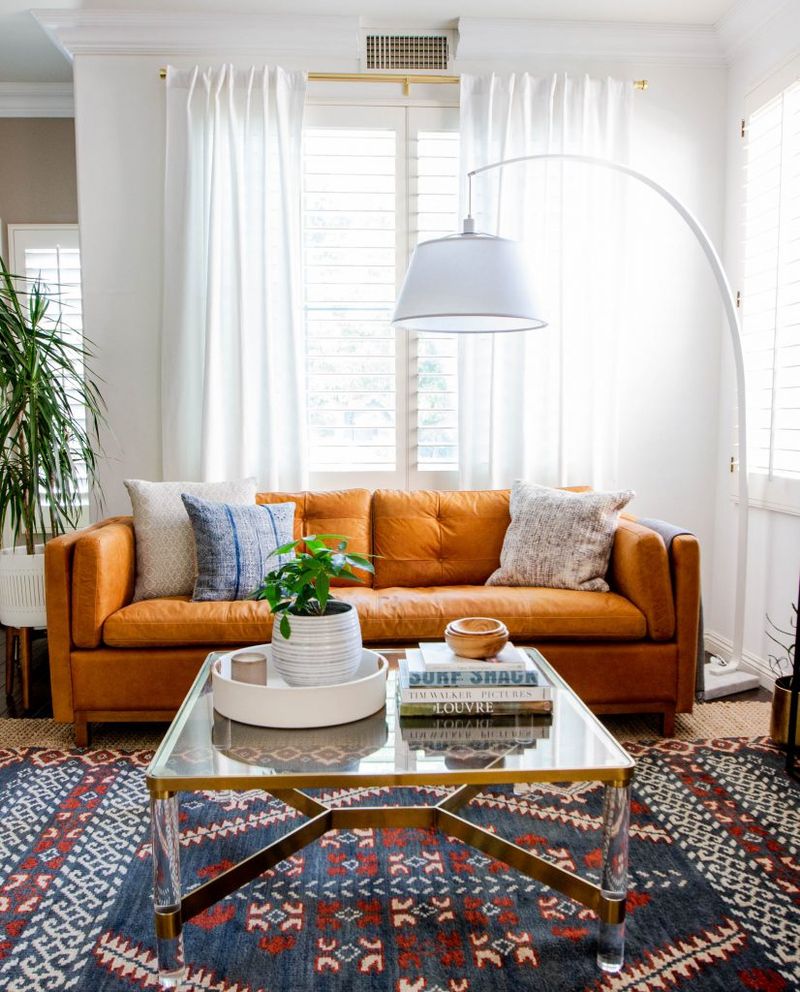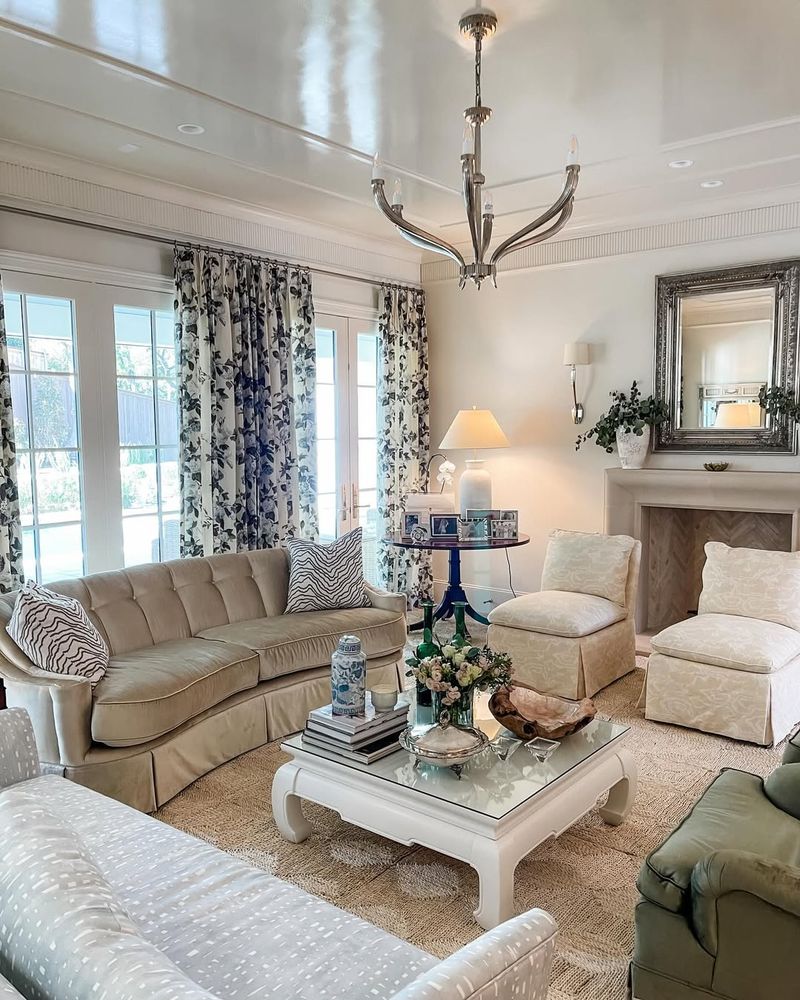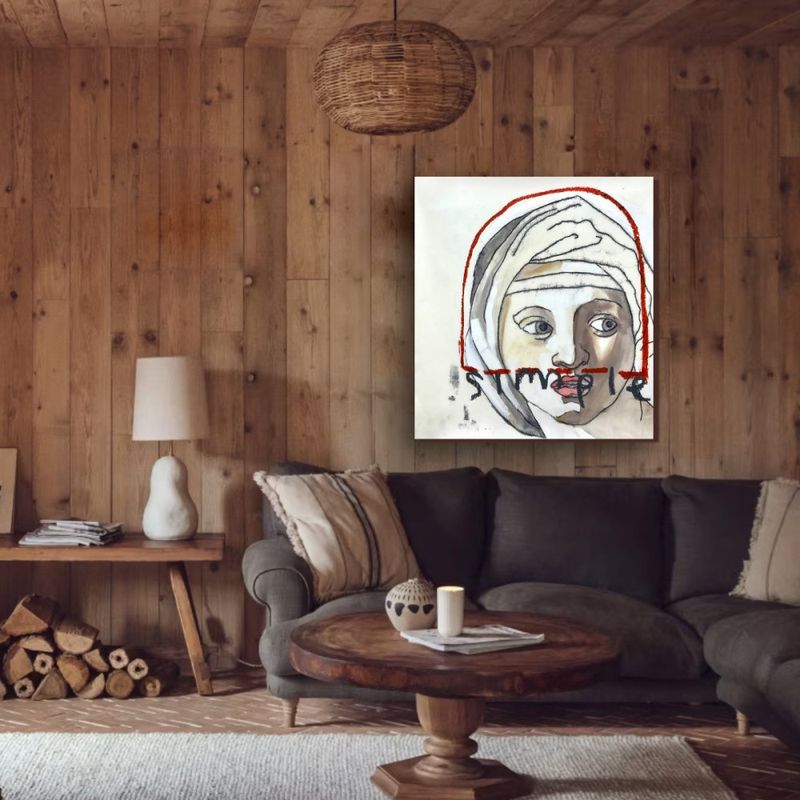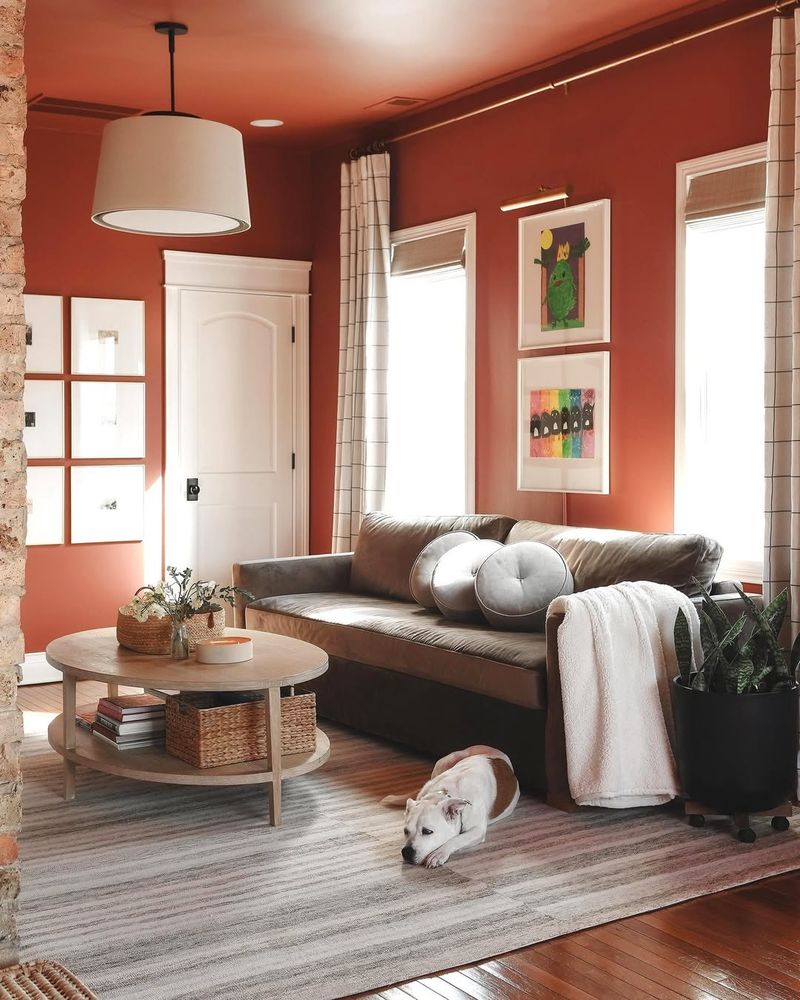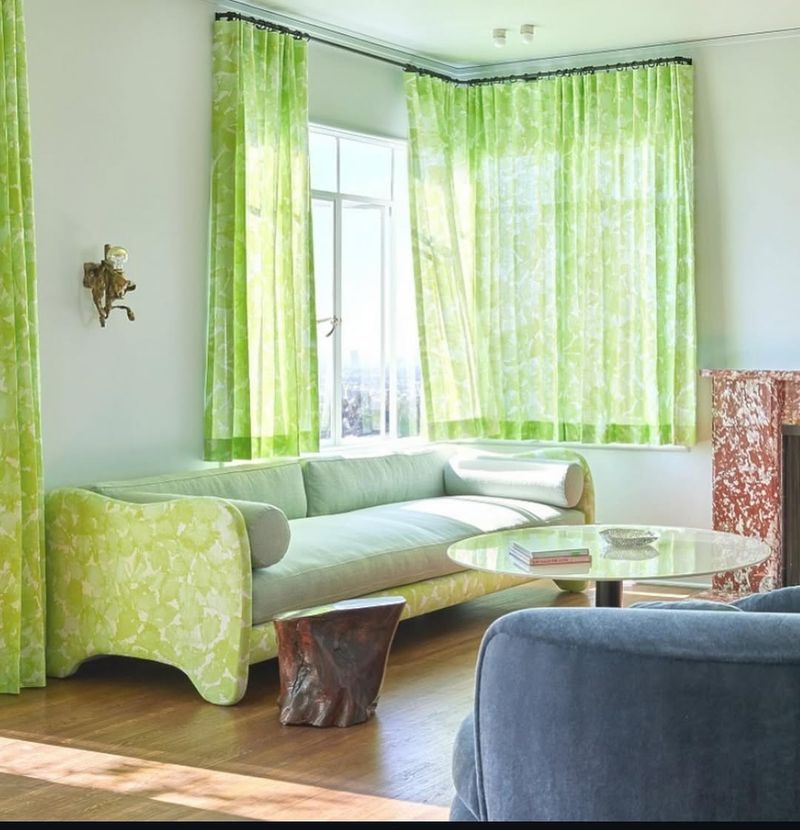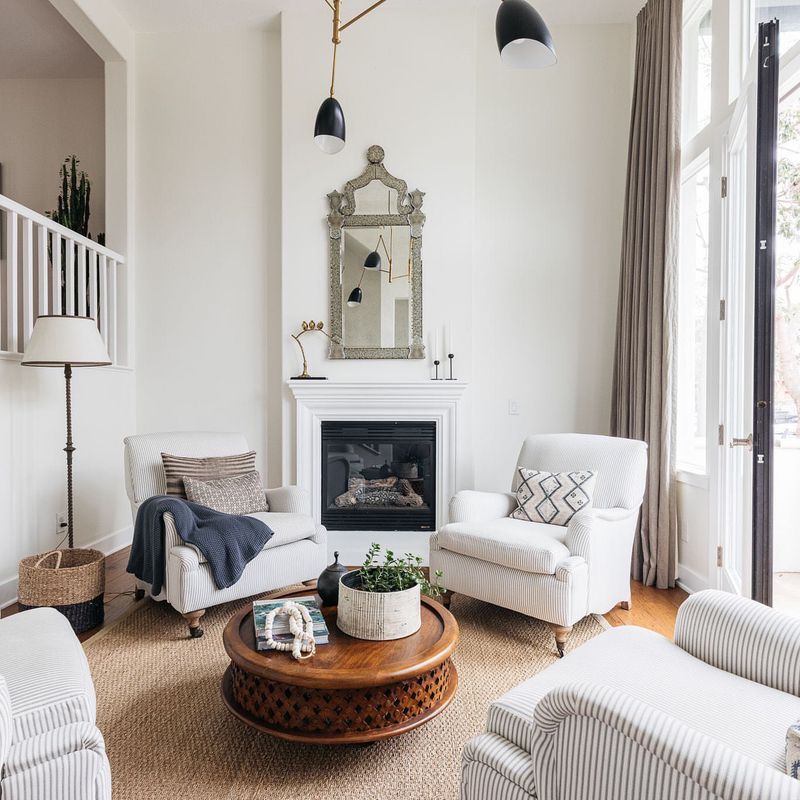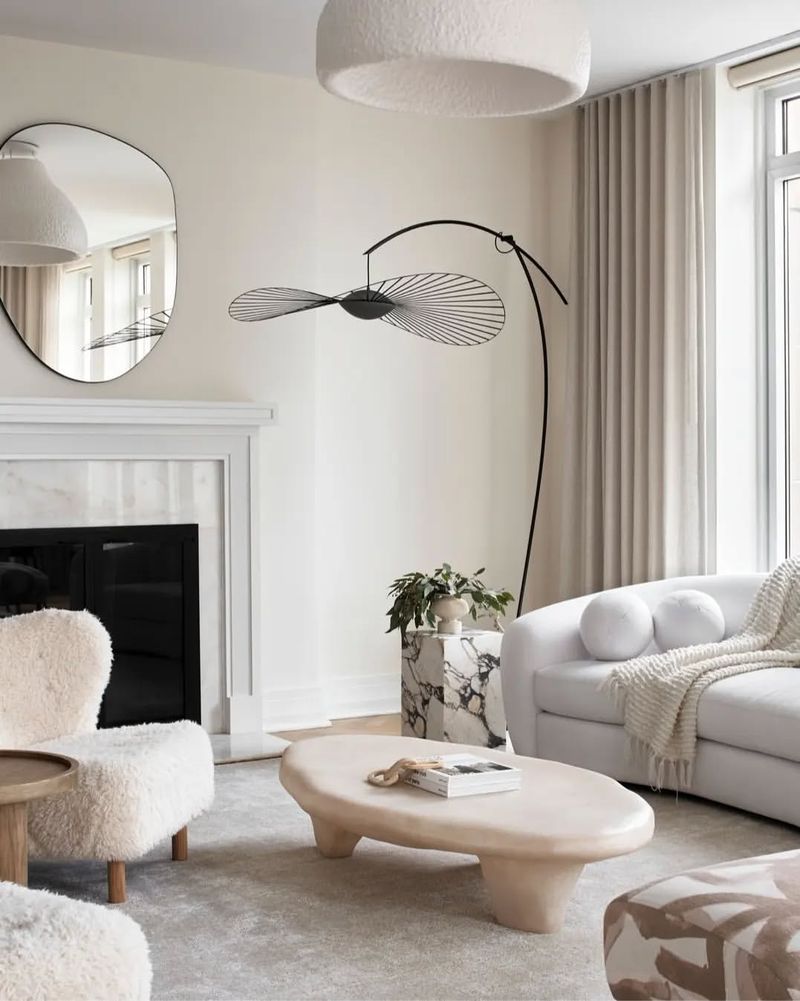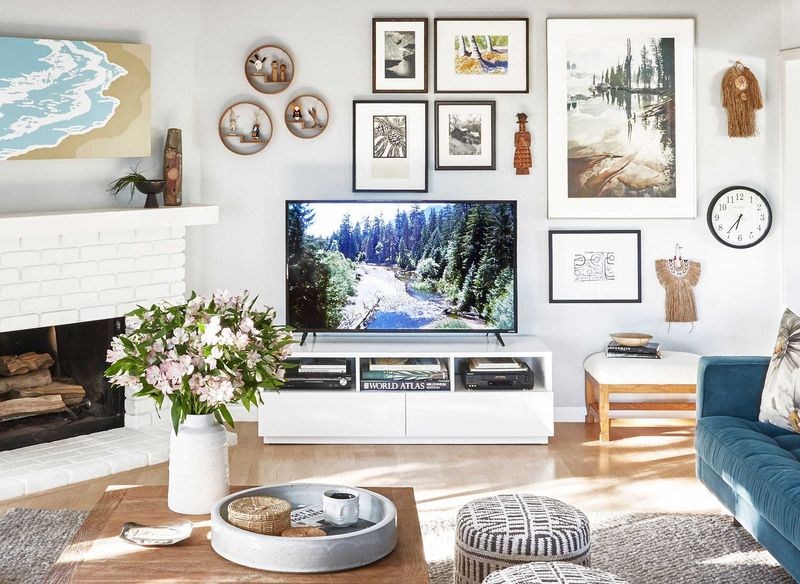Have you ever stepped into a living room and sensed something was a bit off? Arranging furniture can be as tricky as it is essential, and certain arrangements can turn an otherwise cozy room into an awkward space.
Over the years, common pitfalls have emerged that can hinder the harmony of your living room. Here, I’ll guide you through 24 specific arrangements that often lead to a less-than-perfect layout. With a fresh approach, you can avoid these common mistakes and create a more inviting atmosphere.
1. The Wall Hugger
If you’ve ever felt your living room resembles a waiting room, you might be a victim of the ‘wall hugger’ layout. Here, furniture lines the walls, leaving a vast, awkward void in the middle.
Though it seems space-saving, it often disconnects the conversation area, making gatherings feel less intimate. Instead, try angling some pieces inward to foster interaction.
Rearranging can transform your space from standoffish to cozy, encouraging warmth and communication. Hence, don’t be afraid to pull furniture away from the walls to create a more inviting space.
2. The TV Shrine
Where does your focus lie in the living room? If it’s all about the TV, your space might just be a ‘TV shrine.’ All seats pointing at the screen can make the room feel like a theater rather than a home.
However, life’s not only about watching shows, and rooms should reflect this variety. Consider arranging seats to encourage conversation and views beyond the screen.
Reclaim your living room’s versatility by balancing entertainment with comfort and interaction. Let’s make your space more dynamic, fostering various activities.
3. The Rugless Room
How often do you feel something’s missing beneath your feet? A lack of a central rug can make your living room feel incomplete and disjointed.
A well-chosen rug defines zones, anchoring furniture to foster unity in the space. Hence, without it, your setup risks appearing scattered, lacking a focal point.
Investing in a rug can instantly bring warmth and cohesion, tying together disparate elements into a pleasing whole. Consider a rug to elevate your design and ground your room.
4. The Oversized Sofa
Though it’s tempting to choose the largest sofa for comfort, an oversized piece can dwarf your room. If navigating around it feels like a maze, it’s time to reconsider.
A sofa should complement, not overpower, the space. Consider smaller or modular options to maintain flow and accessibility.
Creating balance can transform a cluttered room into a harmonious retreat. Let’s ensure your furniture fits the scale of your space, enhancing rather than hindering its appeal.
5. The Lopsided Layout
Where balance is absent, harmony falters. A lopsided layout, with furniture clustered on one side, can skew your room’s aesthetics.
Visual imbalance makes the space feel heavy and unwelcoming. However, distributing furniture evenly allows energy to flow freely, enhancing the room’s appeal.
Consider symmetry or strategic asymmetry to bring back equilibrium, ensuring every corner of your living room feels thoughtfully considered and inviting.
6. The Overcrowded Nook
If your living room nook feels more like a storage room, it might be overcrowded. Small pieces crammed together can stifle the space, making it feel claustrophobic.
Though each item is charming on its own, together they suffocate the area, leaving little room to breathe. Simplifying can create an open, airy feel.
Consider removing or rearranging items for a cleaner look, and you’ll find your nook becomes a haven rather than a headache. Less truly is more in small spaces.
7. The Unlit Corner
Where shadows linger, comfort fades. An unlit corner can disrupt the harmony of your living room, creating a neglected spot.
Though it might seem minor, lighting affects mood and functionality. Consider adding a lamp or sconce to transform this area from overlooked to integral.
Enhancing lighting can open up your space, making every corner warm and welcoming. Illuminate your living room, ensuring it feels complete and connected.
8. The Floating Furniture
How does furniture arrangement affect your room’s flow? Floating pieces, placed without cohesion, disrupt the energy and create chaos.
Furniture should work harmoniously, guiding movement and interaction. Without a plan, the room feels fragmented and less functional.
Consider defining paths and zones to bring order. Aligning furniture thoughtfully can transform a chaotic space into a harmonious retreat, inviting calm and focus.
9. The Doorway Blockade
If navigating your living room feels like solving a puzzle, check for a doorway blockade. Poor placement can impede flow, leading to constant frustration.
Blocking entrances and pathways disrupts natural movement, making the room feel cramped and awkward. Instead, reposition furniture to facilitate easy access.
This small change enhances usability, transforming your living room into a welcoming and functional space. Let’s clear the path to comfort and enjoyment by opening up those vital access points.
10. The Matchy-Matchy Trap
Where’s the personality in a matchy-matchy trap? Rooms where everything coordinates too perfectly can lack character and feel uninspired.
Though uniformity has its appeal, diversity adds depth and interest. Mixing textures, colors, and styles can infuse your space with life and individuality.
Embrace contrast to transform your living room from bland to bold, creating a space that’s uniquely yours. Let’s break free from monotony and celebrate variety for a more vibrant home.
11. The Size Mismatch
If your living room feels like a mismatched puzzle, the proportions might be off. Furniture that doesn’t scale together disrupts harmony, creating awkwardness.
Balance is key; too large or too small pieces throw off the visual appeal. Consider proportional furniture that complements each element, fostering a cohesive look.
Proper sizing transforms your space into a well-coordinated retreat, enhancing comfort and style. Let’s align proportions to ensure your living room radiates balance and beauty.
12. The Backward Sofa
If your sofa lacks connection with the rest of the room, it might be backward. Placement affects how welcoming and integrated the space feels.
A sofa facing away from the main seating area creates a barrier, disrupting the flow. Consider repositioning it to foster interaction and unity.
Thoughtful placement can transform your living room into a cohesive and inviting area. Let’s ensure your furniture arrangement encourages connection and conversation.
13. The Busy Corner
How does one create a sense of calm amidst chaos? A busy corner, overflowing with decor, can overwhelm your living room.
Though each piece might have its charm, together they compete for attention, causing visual clutter. Simplifying can bring clarity and focus.
Consider editing down to essential elements, allowing each piece to shine. A serene corner enhances the room’s overall tranquility, inviting relaxation and enjoyment.
14. The Barren Walls
Where does your gaze fall in a room with barren walls? Empty spaces can make a living room feel stark and uninviting, lacking personality.
Though minimalism has its place, adding art or decor infuses life and character into the space. Consider layers of interest with varied wall accents.
Enhancing your walls can transform a stark room into a warm and welcoming retreat. Let’s ensure your living room tells a story, reflecting your style and flair.
15. The Uninviting Entry
If stepping into your living room feels less than inviting, focus on the entryway. First impressions matter, setting the tone for the entire space.
An unwelcoming entrance can dampen the atmosphere, making it feel cold. Consider adding a console table or a cozy rug to enhance warmth.
Creating an inviting entry transforms your living room from the first step, promoting a welcoming and comfortable environment. Let’s ensure your space greets guests with open arms.
16. The Over Decorated Mantel
How does one balance elegance with personality? An over-decorated mantel can overwhelm a living room, making it feel chaotic.
Though personalization is key, too many items can compete for attention, detracting from the mantel’s inherent charm. Simplifying and curating key pieces can bring balance.
Consider showcasing a few favorite items that complement rather than clutter. A well-styled mantel enhances the room’s elegance, creating a sophisticated focal point.
17. The Disjointed Theme
Where there’s chaos, there’s often a disjointed theme. Inconsistency in design can make a living room feel unfocused and haphazard.
Though mixing styles adds interest, cohesion is essential for harmony. Consider selecting a central theme that guides decor choices, ensuring a unified look.
Creating a cohesive theme can transform your living room from chaotic to calm, enhancing its visual appeal. Let’s align the elements to craft a space that flows seamlessly.
18. The Crowded Coffee Table
If your coffee table feels more like a storage shelf, it might be time to declutter. Overloading the table can make the living room feel cramped.
Though functionality is essential, too many items can overwhelm, reducing usability. Consider simplifying the display for a cleaner look.
Clearing space enhances practicality, inviting ease and enjoyment in your living room. Let’s ensure your coffee table serves as a stylish and functional centerpiece.
19. The Neglected Backdrop
How does your backdrop contribute to the room’s atmosphere? A neglected wall can leave a living room feeling incomplete.
Though often overlooked, the backdrop affects the room’s brightness and mood. Consider adding art or shelves to enhance the visual appeal.
A thoughtful backdrop can transform your living room, adding depth and interest. Let’s ensure your space feels complete and considered from every angle.
20. The Overpowering Color
Where color dominates, subtlety fades. An overpowering color scheme can make a living room feel intense and overwhelming.
Though bold colors add personality, balance is crucial. Consider incorporating neutral tones to soften the overall effect.
A balanced palette transforms your space from overpowering to pleasing, enhancing comfort and style. Let’s ensure your living room reflects harmony through thoughtful color choices.
21. The Ill-Fitted Curtains
If your curtains disrupt rather than enhance the room, they might be ill-fitted. Length impacts the aesthetics and feel of your living room.
Short curtains can make windows appear smaller, while overly long ones create clutter. Consider curtains that just graze the floor for a polished look.
Properly fitted curtains transform the room, enhancing elegance and proportion. Let’s ensure your living room boasts well-dressed windows, elevating the overall design.
22. The Ignored Traffic Flow
Where frustration mounts, traffic flow might be ignored. Poor furniture placement can impede movement, making the living room feel cumbersome.
Though maximizing seating is key, clear pathways are essential for comfort. Consider repositioning furniture to facilitate easy movement.
Enhancing flow transforms your space from frustrating to functional, inviting ease of use. Let’s ensure your living room layout encourages effortless navigation.
23. The Lackluster Lighting
How does lighting affect your mood? A lackluster setup can dim the atmosphere, making a living room feel cold and uninviting.
Though subtle, lighting impacts both aesthetics and function. Consider layering light sources for a warm, dynamic effect.
Revitalizing lighting can transform your space, enhancing comfort and appeal. Let’s ensure your living room shines, creating a welcoming and enjoyable environment.
24. The Unanchored TV
If your TV floats aimlessly on a wall, it might feel unanchored. Proper placement ensures it complements rather than detracts from the room’s design.
A well-anchored TV, surrounded by decor or furniture, creates a balanced focal point. Consider integrating it into a media unit for cohesion.
Thoughtful placement can transform your living room, making entertainment areas seamless and inviting. Let’s ensure your TV setup enhances rather than hinders the room’s appeal.

